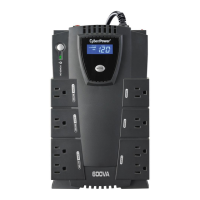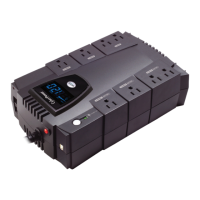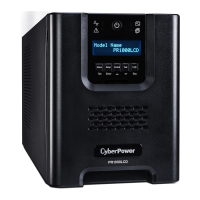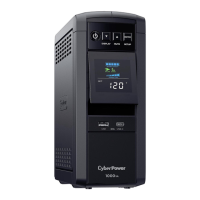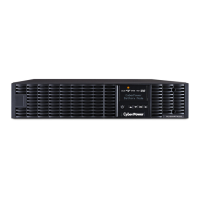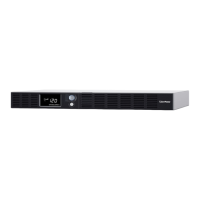[UPS->Information] Display the technical specifications of the UPS.
The model name of the UPS.
The serial number of the UPS.
The nominal output voltage rating (Volts) of the UPS.
The operating frequency of the UPS output power.
The Volt-Amp rating of the UPS.
The output current rating (Amps) of the UPS.
The power rating (Watts) of the UPS.
The operating DC voltage rating of the battery power.
The revision number of the UPS firmware.
Update: Use this function to upgrade the UPS firmware. For further
information, please refer to Appendix 3.
The revision number of the UPS USB firmware
The revision number of the UPS LCD firmware
The date that the batteries were last replaced. This must be set
manually after the batteries have been replaced or when the unit is first
installed. If this date has not been set, it is recommended that it be set
immediately.
The amount of Non-Critical Load banks.
The amount of the external battery modules connected to the UPS. The
number of modules is configured manually, and the configurations will
vary by model.
When
indicators will flash on the UPS to alert users of the specific location.
This helps users to identify a specific UPS in lots of UPS.
[UPS->Configuration] Configure the parameters of the UPS.
Set the UPS output voltage that is supplied to the connected
equipment.
Note: On some models belong to Paragon Tower series, this setting
becomes configurable in Bypass Mode and the changes require a restart
to activate.
Utility Power Failure Condition
High/Low Input
(or Output)
Voltage
Threshold
When the utility power voltage or output voltage (depending on UPS
model) is higher/lower than the threshold, the UPS will supply battery
power to the connected equipment.

